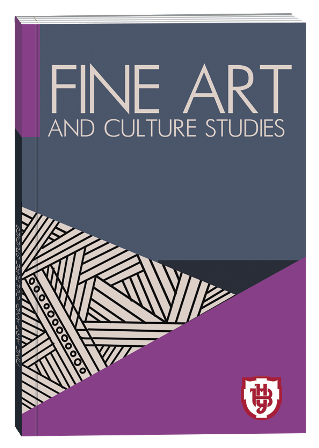EVOLUTION OF SOUND ENGINEERING: FROM ANALOG TO DIGITAL TECHNOLOGIES
DOI:
https://doi.org/10.32782/facs-2025-4-4Keywords:
sound engineering, analog recording, digital technologies, sound recording evolution, digital audio workstation, tape recorder, audio processingAbstract
The purpose of the work is to study the evolutionary path of sound engineering development from analog technologies to modern digital systems, identify key stages of sound recording transformation and analyze the impact of technological innovations on the professional activities of sound engineers. The research methodology is based on the use of historical-chronological method to determine the stages of sound recording development, comparative analysis to identify differences between analog and digital technologies, systematic approach for comprehensive study of sound engineering transformation, method of theoretical generalization for systematization of accumulated experience. Scientific novelty lies in comprehensive analysis of sound engineering evolution in the context of transition from analog to digital technologies, identification of key technological breakthroughs that influenced the industry development, systematization of sound recording development stages from mechanical to digital, revealing features of hybrid approach in modern sound engineering. Conclusions. The study showed that the evolution of sound engineering has gone through a complex path from mechanical sound recording of the late 19th century to modern digital audio workstations. The transition from analog to digital technologies has radically changed the principles of sound engineers’ work, expanded creative possibilities and democratized access to professional sound recording. Digital technologies have provided higher sound quality, unlimited editing and processing capabilities, and integration with computer systems. At the same time, analog technologies remain relevant due to their unique sound characteristics. Modern sound engineering is characterized by a hybrid approach that combines the advantages of both technologies to achieve optimal artistic results.
References
Безугла Р. І. Ретроспективний аналіз розвитку українського баянного мистецтва. Вісник КНУКіМ. 2001. Вип. 5. С. 27–32.
Бондарець Н. Л. Звукорежисура подкастів як новий напрям у медіавиробництві. Діяльність продюсера в культурно-мистецькому просторі ХХІ століття: партнерство, моделі, напрями, стратегії. Зб. наукових праць. Київ: НАКККіМ, 2024. С. 34–47.
Вейценфельд А. Інтелектуальна власність та звукорежисура. Звукорежисер. 2001. № 6. С. 2–8.
Гайденко І. А. Роль музичних комп’ютерних технологій у сучасній композиторській практиці: дис. … канд. мистецтвознавства: 17.00.03. Харків, 2005. 187 с.
Дьяченко В. В. Творча діяльність українських звукорежисерів другої половини ХХ – початку ХХІ століття: теорія, історія, практика: дис. … канд. мистецтвознавства: 26.00.01. Київ, 2018. 245 с.
Кочержук Д. Особливості застосування комп’ютерних музичних програм в системі звукозапису. Матеріали конференцій МЦНД. Рівне, 2022. С. 34–38.
Кущ Є. В. Електромузичний інструментарій як еволюційний фактор музичної культури ХХ – початку ХХІ століть: автореф. дис. на здобуття наук. ступеня канд. мистецтвознавства: спец. 26.00.01. Київ, 2013. 20 с.
Максимюк С. З історії українського звукозапису та дискографії. Львів; Вашингтон: Вид-во Укр. Катол. ун-ту, 2003. 287 c.
Синєокий О. В. Музичний звукозапис як інститут соціальної комунікації: східно-європейський досвід: монографія. Суми: Унів. кн., 2013. 342 c.
Фадєєва К. В. Сучасні комп’ютерні технології у дослідженні музичної культури: дис. … доктора мистецтвознавства: 17.00.03. Київ, 2016. 380 с.








